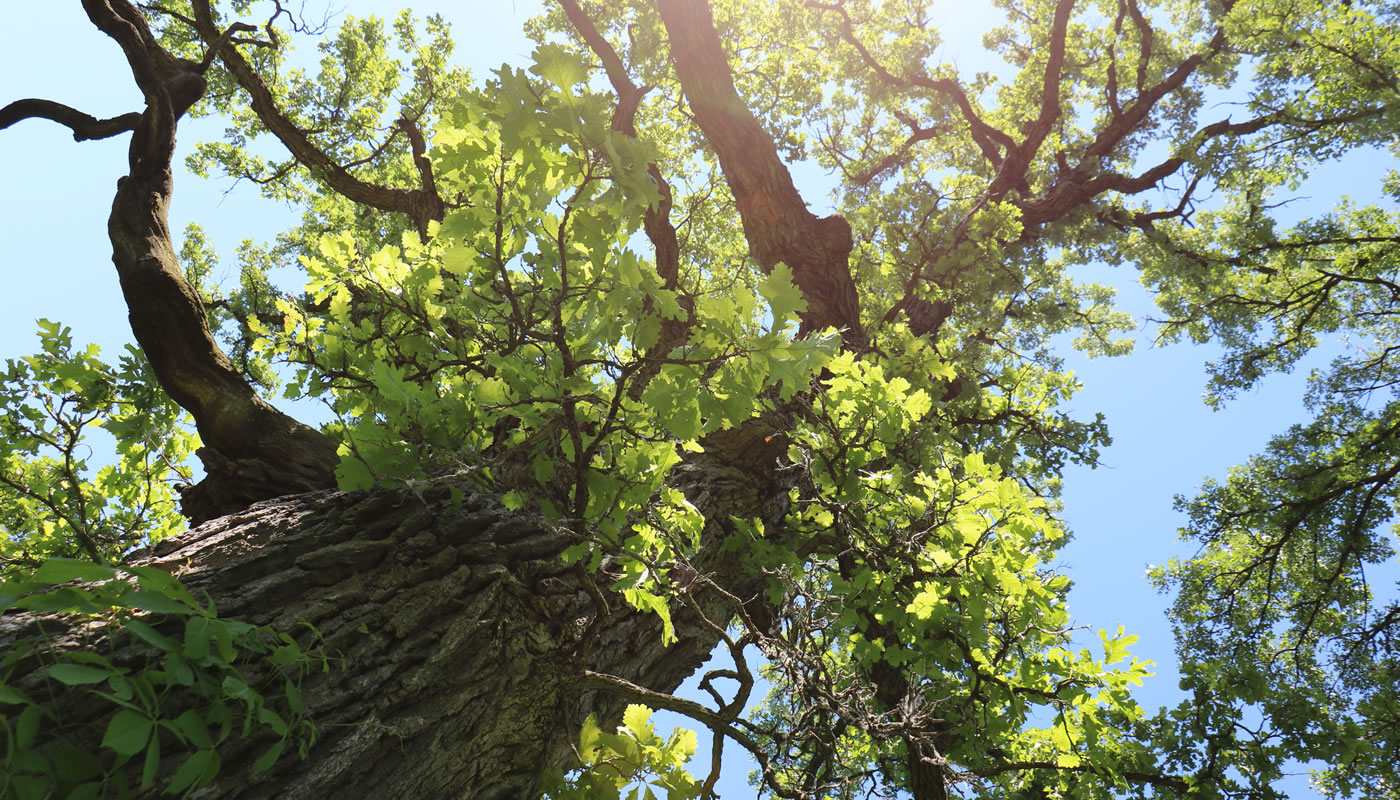Help identify the largest trees in the Forest Preserves by contributing to the Champion Tree Register.
On this page:
Nominate a Tree
The public is encouraged to submit nominations for the largest tree of each species found on Forest Preserves of Cook County land, both native and nonnative. Tree size is determined by the sum of three measurements:
Circumference (inches) + Total Height (feet) + ¼ Average Crown Width (feet) = Total Score.
Nominations will then be verified by a Forest Preserves tree inspector, who will visit the tree to verify its species and dimensions. If the tree passes inspection, it will be added to the Forest Preserves of Cook County Champion Tree Register. The nominator of the certified Champion Tree will receive a certificate of recognition and have their name included on the official record.
If the identified tree is an Illinois native and so large that it meets the criteria for submission to the Illinois Big Tree Register, the Forest Preserves will send an Illinois Big Tree nomination form to the Illinois Big Tree Program coordinator for consideration at the state level.
Contact
Email resourcemanagement.fpcc@cookcountyil.gov for more information on the Champion Tree Register.

